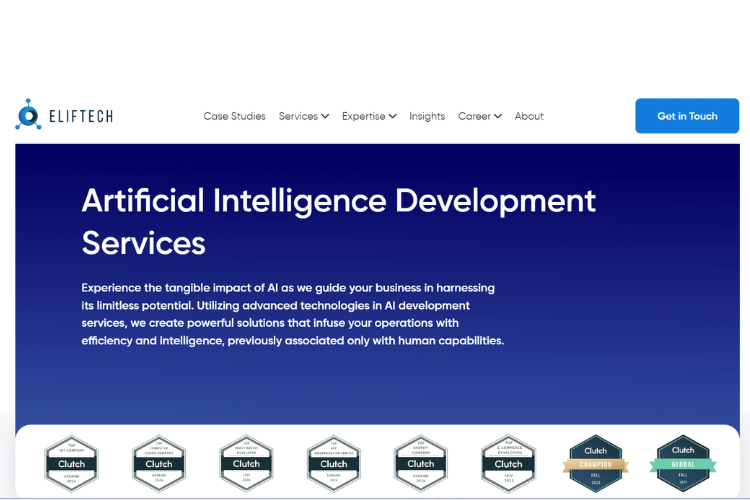
Every institution in this fast-moving tech world searches for the most innovative and least expensive means of software development. It seeks a solution that does not sacrifice quality at budget and even tighter time constraints. This is where collaboration from emerging economies comes in as a goldmine of opportunities for every business worldwide. The blog post will discuss the many benefits of such collaboration, supported by relevant statistics and covering a wide range of views to present an all-rounded picture.
Table of Contents
I. The Financial Perspective: Saving when dealing with emerging economies
One of the blatant advantages of dealing with emerging economies is cost savings. Studies have proven that by outsourcing highly to these countries or regions, companies can reduce development costs by 60%. This is not just because services are available at a more competitive rate but also because of the associated value proposition brought in by such partnerships.
1.1. Quality at a fraction of the cost
The names of countries like India, Ukraine, and Brazil have almost become synonymous with the provision of quality outsourcing services in software development at considerably lower rates than their Western counterparts. The average cost of an hour for writing software in these countries can range between $20 and $50, while it may cost $100-150 in most Western countries. For instance, AI development service how companies from these regions can deliver advanced technology solutions without compromising quality. Many companies in emerging economies are certified and follow international standards, enabling them to offer top-tier services.

1.2. Access to a vast talent pool
The outlook of the technological industry is in the middle of a serious talent shortage: Korn Ferry calculates that 85.2 million jobs will only go with the right person to fill them by 2030. Therefore, looking beyond borders has never been more acute. Emerging economies, with booming young populations and increasingly tech-savvy workforces, hold out an answer to this issue.
1.3. Cultivating talent and innovation
Countries like India alone are likely to have over 5.2 million developers by 2024, making it the largest ecosystem of developers in the world. This mammoth talent pool is well-conversed with the latest technologies and produces a fresh perspective for problem-solving and innovation. One can engage this workforce and significantly accelerate their development cycles while being at the bleeding edge of technology.
1.4. Bridging the technology gap
There has been a notion that outsourcing to emerging economies has to be compromised at the technological end. But the truth is far from this. The emerging markets have covered considerable distance on the technology adoption and innovation fronts; companies in such regions are often pioneering in applying the latest tools and methodologies.
1.5. Pioneering technologies at your fingertips
Take, for example, the globe’s fastest-growing tech fields of artificial intelligence and machine learning. Developers across emerging economies have taken up these technologies quickly, making significant contributions to natural language processing, computer vision, and predictive analytics. By teaming up with tech-savvy entities like ElifTech, companies can utilize advanced technologies to beat out competition—all with contained development budgets.

II. Time zone advantages and the 24-hour development cycle
What many people may not realize as part of this global collaboration is that one of the unsung heroes in fact involves turning time zone differences to your advantage. Counterintuitive as it might sound, a distributed team spanning several time zones can become a productivity booster for executing what many have termed a “follow-the-sun” model.
2.1. Leveraging time zones for enhanced productivity
This model implies in practice that the 24-hour development cycle, sited seaboard-in, can easily take place across time zones in different parts of the globe. Continuous workflow enables faster development and assures that problems are mitigated faster, thus minimizing the risks of downtime and fastening the speed at which new products and features make it to the market.
2.2. Cultural diversification and innovative thinking
Bringing emerging economies on board comes with a package of rich cultural diversity. The latter may, therefore, become a breeding ground for innovation since cultural diversity would naturally mean an atmosphere where the free flow of creativity and openness to new insights prevail in the quest for identifying new solutions.
2.3. Enriching the development process through diversity
The cross-cultural element of collaboration enriches the development process and opens the teams up to new ways of thinking and approaching challenges. This creates a dynamic that fuels out-of-the-box thinking, which can result in true innovation.
III. Overcoming challenges: From communication to intellectual property
While the benefits are significant, it’s also crucial to acknowledge the challenges of collaborating across borders. Issues such as language barriers, cultural differences, and intellectual property concerns are legitimate but possible.

IV. Case studies: Real-world success stories
The proof, as they say, is in the pudding. Numerous companies have successfully leveraged collaborations with emerging economies to drive growth and innovation. From startups to tech giants, these partnerships have yielded remarkable outcomes, from reducing development costs to launching groundbreaking products and entering new markets.
4.1. A look at successful collaborations
By examining these success stories, we can glean insights into best practices for engaging with partners in emerging economies. These cases highlight the financial benefits and the strategic advantages of such collaborations, such as accessing specialized talents, embracing agile development methodologies, and fostering long-term partnerships.
4.2. The road ahead: Embracing global collaboration
Therefore, this trend of collaboration with emerging economies for cost-effective software development is not going to be a fad; it is fast taking the contours of a long-term strategy in the global business landscape. Secondly, the apparent reason that will sustain these collaborations—in times of continued impact of technology and international talent pool dynamics—ought to ostensibly play a significant role in fueling innovation and competitiveness.

4.3. Building a sustainable model for the future
This global collaboration model can be a way forward for any company starting on the bewildering journey of digital transformation. Tapping emerging economies’ talent, creativity, and technological expertise will help companies not only cut costs but also foster innovation, achieve greater agility, and thereby secure a strong position for long-term success in an increasingly changing world.
This collaboration of businesses with their partners from emerging economies is a reciprocal powerful synergy that gives a company all the benefits one would expect from the relationship: cost efficiency, access to a different talent pool, adoption of state-of-the-art technologies, and so on.
Wrapped things up
Only by affiliating with such partnerships would a company surmount the challenges of the often-talked-about digital age, driving growth and innovation in a highly competitive market. The future of software development is global, and only those who will identify and seize the opportunities presented by emerging economies will stand at the forefront of the next wave of technological advancement.












![[SALE OFF] Discount 30% All Premium Extensions On Christmas And New Year 2025 christmas-and-new-year-2025](https://landofcoder.b-cdn.net/wp-content/uploads/2024/12/christmas-and-new-year-2025-1-218x150.png)






